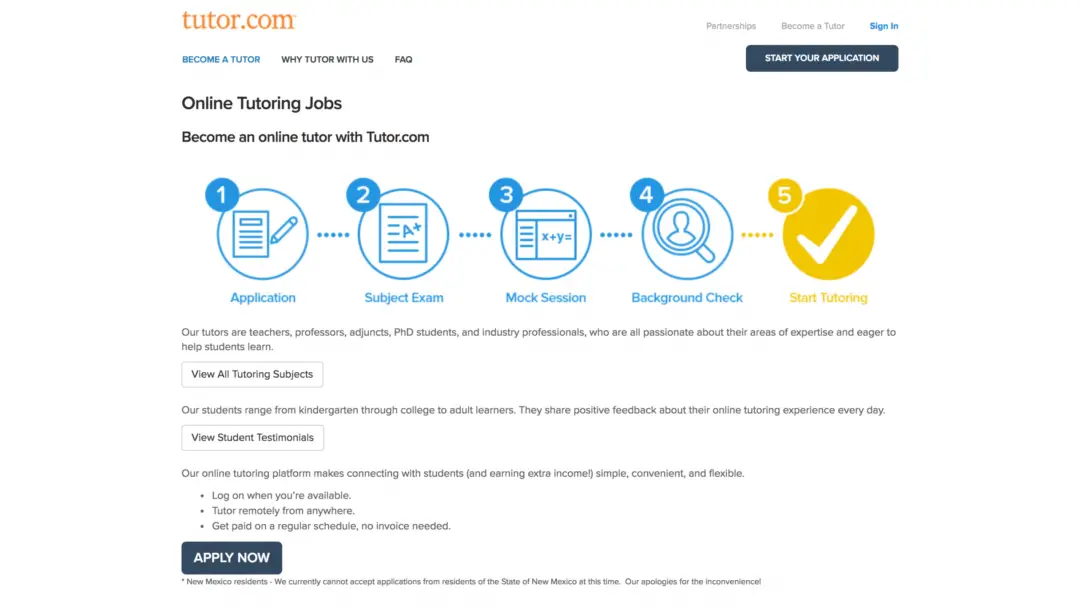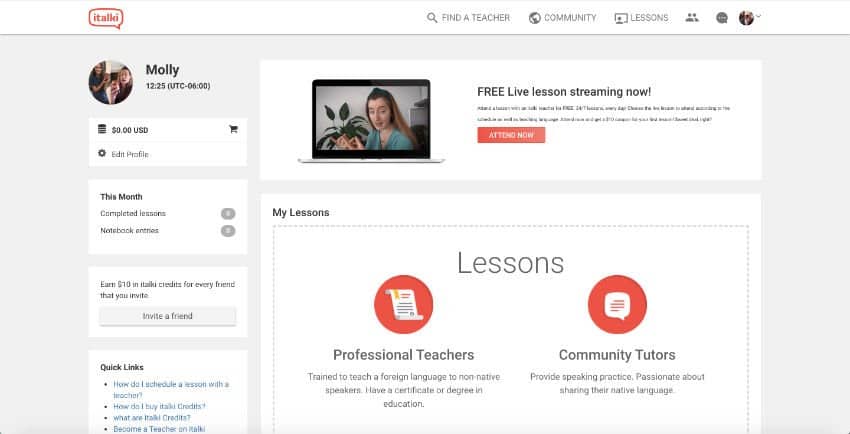Home-based online English tutoring jobs are a very convenient and profitable option to earn a side income or even make a living without leaving your home.
Online tutoring sites or marketplaces connect you with hundreds of thousands of potential students.
But the competition is quite high.
Join our mailing list to receive a free ESL teaching resource every week.
How do you market yourself, find students and fill your schedule?

Online Tutoring Jobs Are Accessible for Anyone
In recent times, the popularity of online English teaching and tutoring has grown by leaps and bounds. A younger generation of digital natives with access to high-speed internet connection has rapidly boosted the demand for online classes and lessons.
Many of your potential students likely reside in other countries; remote tutoring can thus be crucial in helping you to connect with the particular group of students who will benefit most from your expertise.
The hardware and software requirements needed are certainly accessible to most people.
With a working microphone and webcam, a quiet environment, free software like Skype, a high-speed Internet connection, and lesson plans and exercises that can be easily administered online, you are ready to embark on a fulfilling home-based online English tutoring career.
You also do not have to worry about transportation costs or long travel times due to bad traffic.
Of course, you have to be comfortable with teaching in front of a web camera – knowing how to use facial expressions and upper body gestures to better communicate with your tutees will be a major advantage.
The benefits of efficiency and convenience are clear, but how does a new English tutor find online tutoring assignments?
What Are Tutoring Marketplaces?
Tutoring marketplaces make offering online tutoring services a breeze. After creating your tutor’s profile and adding an option of how you want to get paid, like your Paypal account, potential students will be able to connect with you and book lessons.
With so many platforms, you can try out a few different ones to see which works best for you.
Tutoring marketplaces generally give you more flexibility and control than traditional online teaching companies do. The platform will probably set class lengths, but everything else is up to you, including the structure of your lessons.
You may also have to pass a test to qualify to list yourself as a tutor for a specific subject on whatever marketplace you use.
Some sites, like Verbalplanet, allow you to set your own rate, while others, like Cambly, have set rates.
Some platforms will require you to do lesson planning if you want to succeed, while others focus on facilitating conversations between language learners and native speakers – you just have to show up and talk!
Some, similarly to online teaching companies, require teachers to have bachelor’s degrees and be native speakers, while others let anyone create an account on their platform.
The Pros
- Tutoring marketplaces give you complete control over your schedule, your students, and your lessons. You can decide what subject matter to cover and what ages and levels of students you’d like to teach.
- The platform handles the payment and some user support.
- Most tutoring marketplaces let you teach from your phone or tablet.
- Tutoring marketplaces usually have a low barrier to entry, meaning non-native speakers or tutors without bachelor’s degrees may apply.
- Some platforms provide teaching software and resources for lessons.
The Cons
- Because almost anyone can teach through a marketplace, it may be hard to stand out from all the teachers on the site and build up a client base.
- Due to the competition, some teachers also set very low rates, making it harder to earn money teaching for a fair wage.
- Students may not sign up for repeat classes or may give you an unfair rating, hurting your reputation on the site.
How Much Can You Make as an Online English Tutor?
Tutor marketplaces like italki and Verbalplanet let teachers set their own rates. Standard rates tend to hover around $10-25 per hour, but you can browse around to see what other tutors like you are charging to help you settle on a reasonable and fair rate for lessons.
If you have a teaching certificate or have experience teaching for tests like the TOEFL or the SAT, you can charge a higher rate for your lessons.
Tutors specializing in Business English and test preparation can easily charge upwards of $50 an hour. Pearson and Varsity Tutors are among the companies that connect expert tutors with students worldwide.
If you charge $25 an hour and work for 10 hours a week through a marketplace you’ll earn $1,000 a month teaching.
It’s important to remember that teachers in tutor marketplaces and independent teachers do more work than just time spent in the classroom. They’re responsible for their own lesson planning and marketing, which adds to their workload.
The Best Online Tutoring Marketplaces
Ziktalk hosts conversations and doesn’t require tutors to be native speakers or have any teaching certifications. The app works on your phone, and you set your own rate by the minute.
With Cambly, you’ll make 17 cents a minute ($10 an hour) conversing with language learners all around the world. You won’t pay the bills with it, but it is a good side gig. You don’t need to be a native speaker or have a bachelor’s degree to tutor with Cambly, as long as your English is good. Teachers can’t use Cambly on smartphones or tablets. This guide to working for Cambly has more information about what teaching on the platform is like.
NiceTalk hosts conversations between native English speakers and Chinese ESL learners who want to practice their conversational English. Teachers get paid per full minute spent talking, and most of the students are adults. The NiceTalk app is compatible with Android and iOS. Tutors get paid $10 an hour.
Verbalplanet lets tutors set their own schedules and rate. Lessons last 45 minutes, and tutors customize lessons to fit their students’ needs. It’s more involved than a conversation-based marketplace, but the pay is better and the hours are steadier. The site has lots of tools to help teachers manage their clients, as well.
italki lets tutors set their own rate and schedule, similar to Verbalplanet. The platform handles marketing and other client management tasks, so teachers can focus on delivering high-quality lessons to students. You don’t need to be a native speaker to teach on italki as long as your English is good, and you can teach from a phone or tablet.
Other marketplaces are:
- tutor.com (offers tutoring for a variety of subjects as well as English)
- preply.com (a fast-growing ESL platform that is attracting plenty of students)
- tutorhub.com (UK-based platform, branches into other subjects and pays around £20-£40 p/h)
- wyzant.com (US-based platform, variety of subjects and can cater to higher ed students)
- learnpick.com (another US-based platform with plenty of subjects and students)
8+1 Steps on How to Start
Tutoring on an online marketplace is a little less structured than working for a company, but there are a few steps you need to follow to get your business off the ground.
Follow these steps to create a successful and profitable teaching business through an online tutoring marketplace.
1. Decide Whom and What You Want to Teach
Before you start looking for potential students based on the various avenues described above, you should clarify a few key issues:
- Who is your target demographic: kids, high school students, business people, speakers of certain languages, etc?
- What exactly will you be teaching them: beginner vocabulary, conversational English, business English, test prep, etc?
- What’s the real value of your lessons for your students – compared to other tutors?
Once you have a clear idea of your unique selling point, it will be easy for you to connect with the students that are the best match for your services.
2. Decide Which Marketplace you Want to Use
First, do your research. Browse around a few different marketplaces and get a feel for what kind of work you want to be doing.
Do you want the freedom to set your own rate and schedule? Do you want to converse or prepare lesson plans? How much time are you willing to devote to the job? Where in the world do you want to be teaching? Which marketplace?
Take into consideration that you’ll be working with students in a different time zone, so you may have to work weird hours depending on where you teach.
You can read testimonials from different teachers and do some comparisons before you decide on a marketplace.
3. Submit an Application
Next, you need to apply for the job.
In general, you will have to pass through a (more or less strict) screening and verification process before you can start to advertise your tutoring services on these platforms. Some marketplaces have an interview or require you to make a video introduction.
How long it will take the employer to get back to you varies based on the company and how many applications they get.

4. Create a Professional Profile
Once you’ve gotten hired, you’ll need to fill out your teacher profile.
Provide some background information, highlighting any teaching experience, language skills, or certifications.
You’ll want to submit a professional-looking photo and an introduction video that features you looking friendly and speaking clear, native-sounding English.
Your profile is the first impression parents will get of you, so it’s important to really sell your skills and put your best face forward here.

5. Figure out the Specifics of Your Teaching Practice
Finally, you’ll decide on your availability and, depending on the marketplace you choose, set your prices.
It’s a good idea to look at what other tutors like you are charging before you decide your rates, so you stay competitive.
6. Promote Your Teaching Business
When so many home-based online English tutors can be accessed with a few mouse clicks, it is often difficult to stand out from the crowd.
To help increase enrollment in your tutoring sessions, promote yourself using whatever tools are available to you on the platform, as well as on Facebook, your personal blog, online classifieds, and more.
You can spread the word about your services the old-fashioned way, by placing fliers around your area and telling people in your offline social network about your availability as an online English tutor.
You can also spend some money to advertise your services on social media or on local and international classified websites (e.g. Craigslist).
You can always invest in a personal website, some well-written articles, and even some free video lessons to showcase your personality, teaching style and expertise as a tutor.
Your articles and videos may gain significant traction on their own, thus ensuring that you catch the attention of a large number of potential tutees (and/or their parents).
7. Teach Great Lessons
Most importantly, you need to teach the lessons themselves. If you work for a platform that’s not just conversation-based you’ll spend time designing unique curriculums to fit your students’ needs.
To convince potential students to book lessons with you, you can demonstrate your aptitude by offering trial lessons and free downloads of quality learning materials.
If you do a good job, you’ll get positive feedback that will help spread your reputation as a good teacher and in turn increase your client base.
Lessons are the meat of your business, so constantly working to improve your lessons is the most important thing you can do as an online ESL teacher.
Learn more about the best practices of successful online English teachers.
8. Get Paid!
Payments vary by platform. Some allow teachers to get paid through the method of their choosing, while others require their tutors to use Paypal or another similar method of payment.
Whatever it is, you’ll want to be sure your payment information is connected to the system so you can get rewarded for your hard work.
Bonus: Network With Other Tutors
Be sure to socialize with your fellow teachers and tutors by participating actively via relevant Facebook pages (e.g. the British Council’s Teaching English Facebook page), Facebook groups, LinkedIn, or Twitter conversations.
Apart from sharing resources and expertise with your fellow tutors, you may also gain valuable referrals and tutoring opportunities.
A fellow tutor with too many potential tutees on his or her hands can redirect them to you if he or she is confident about your teaching abilities.
You can also make your lessons more exciting by collaborating with other online tutors.
Is teaching ESL online worth it? Read the answer in this article.

You can also try TUTOROO. It is a marketplace connecting students with qualified tutors. They are looking for more part-time English language tutors who can teach online or in person. Just register your profile on their site at https://www.tutoroo.co/signup-as-a-private-language-tutor and they will help you find your students. You can choose your hours and set your hourly rate depending on your qualifications and experience. Visit their site to learn more. Hope this helps!
I appreciate your website. The information you provide is a good basic place to start learning more about online teaching. I am in China and a lot of people won’t hire me due to being 67 years old. I have Business English experience, so I am thinking of either a tutor platform or freelance.